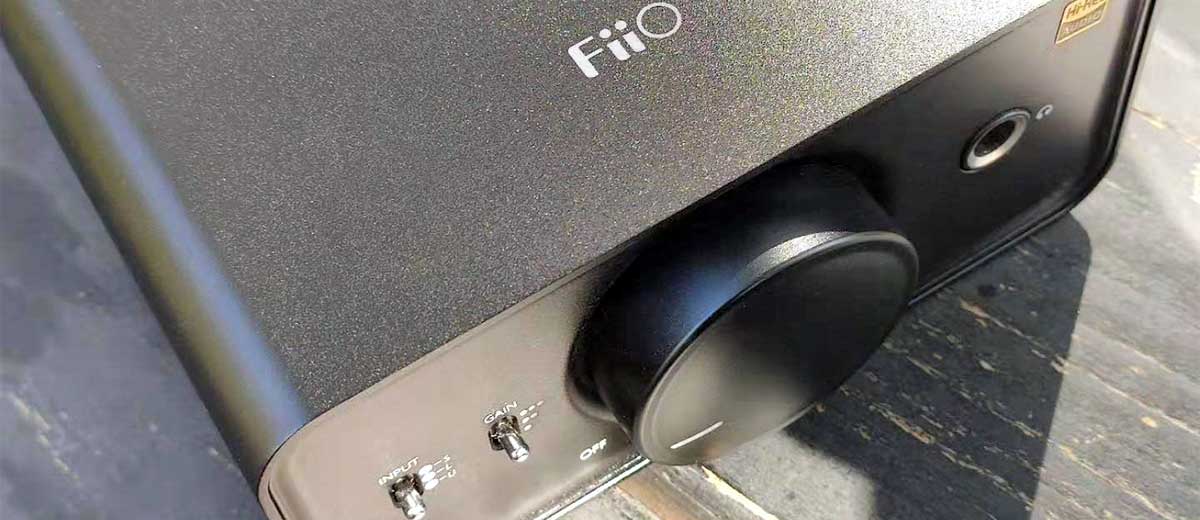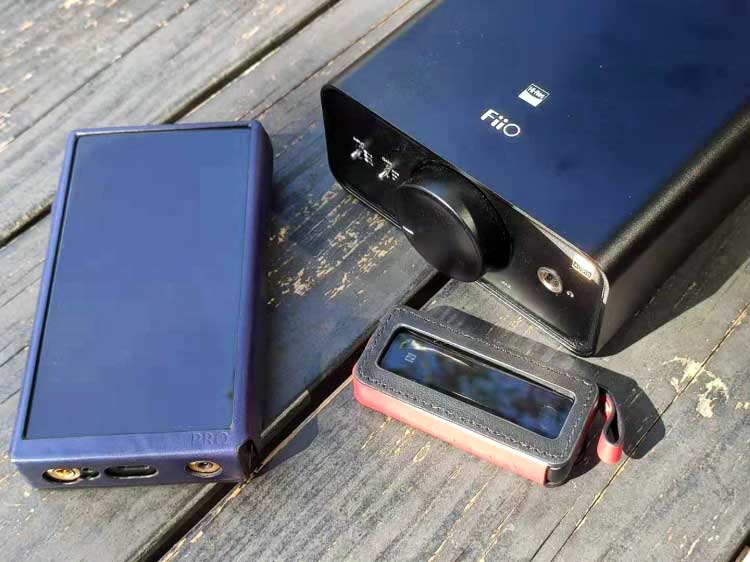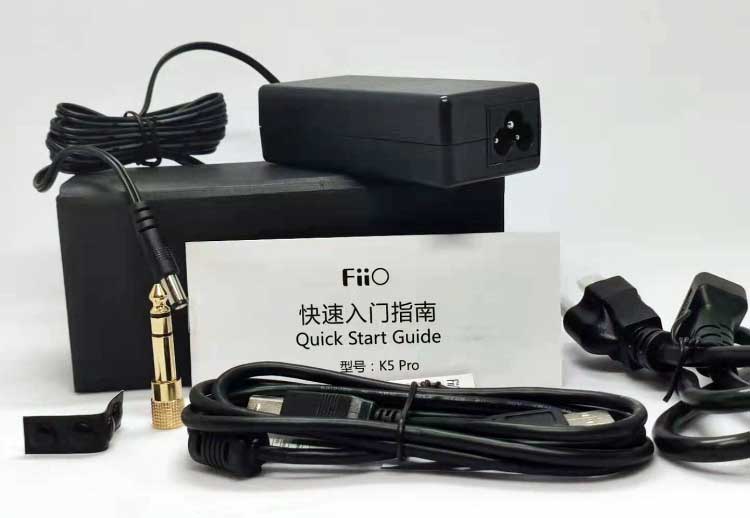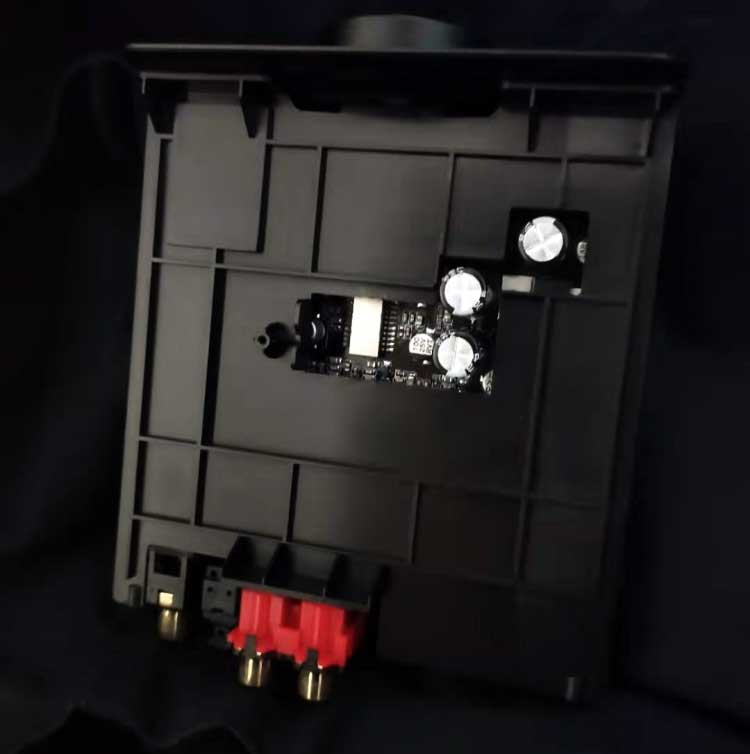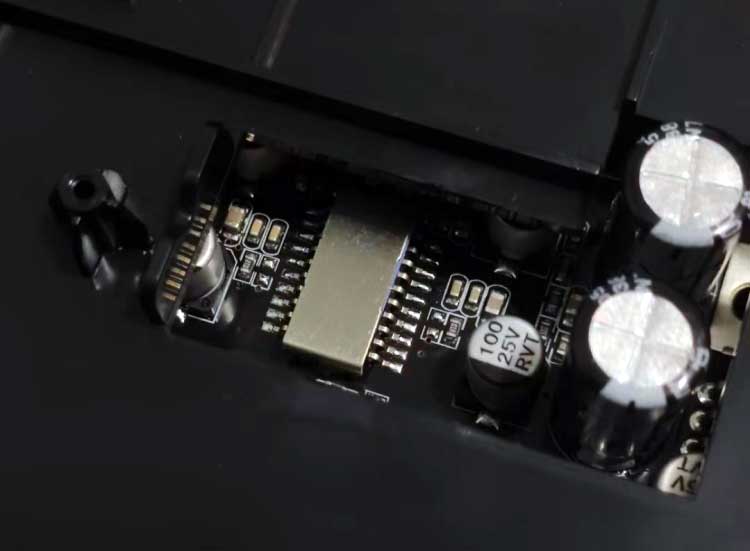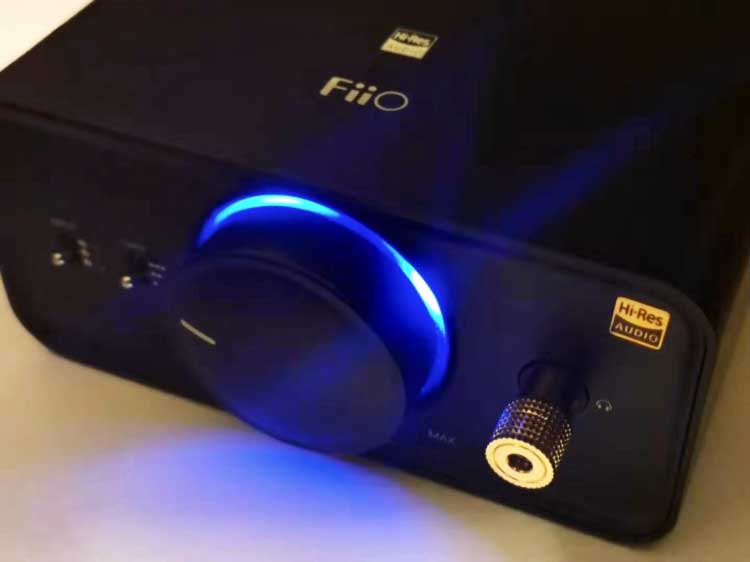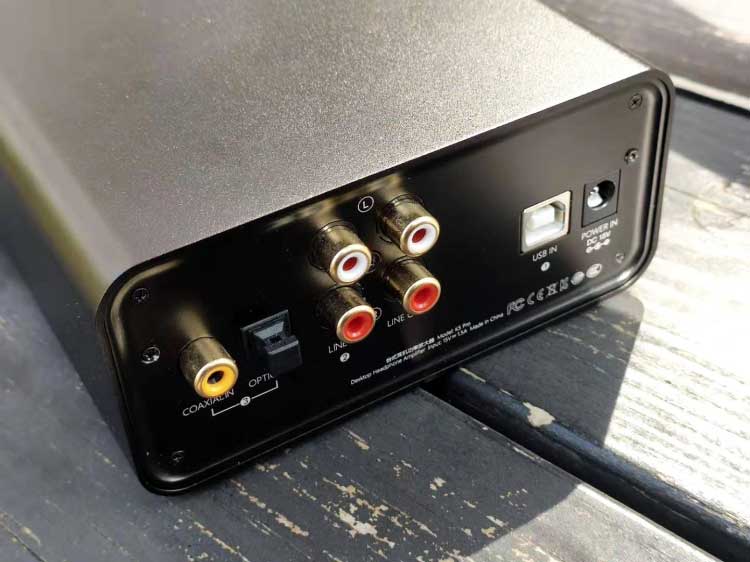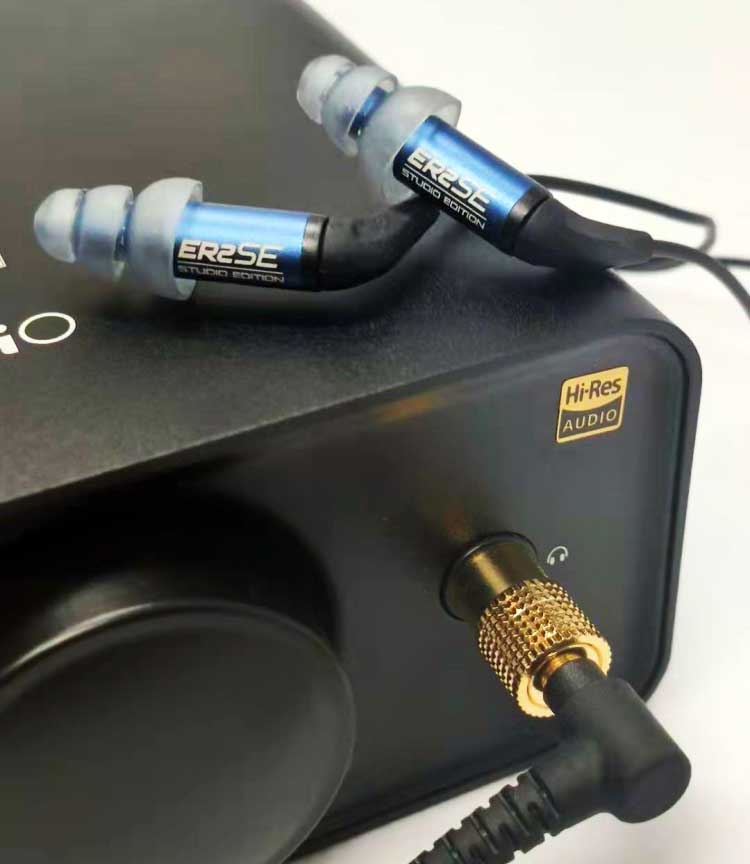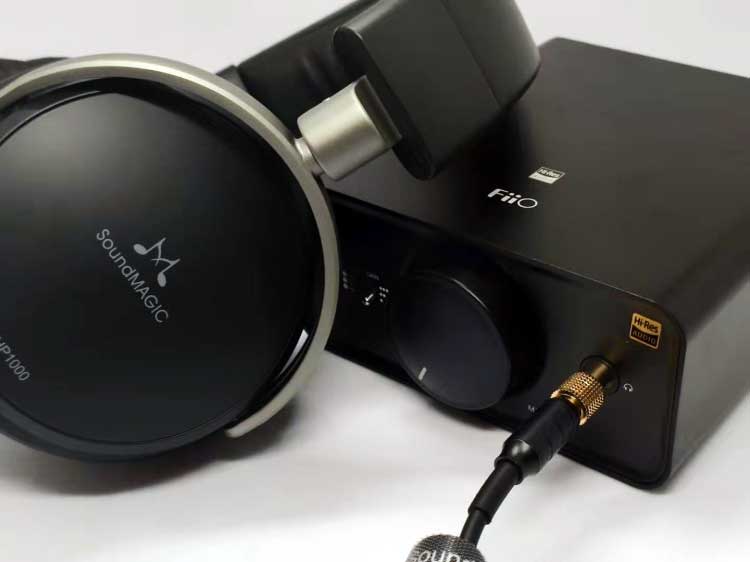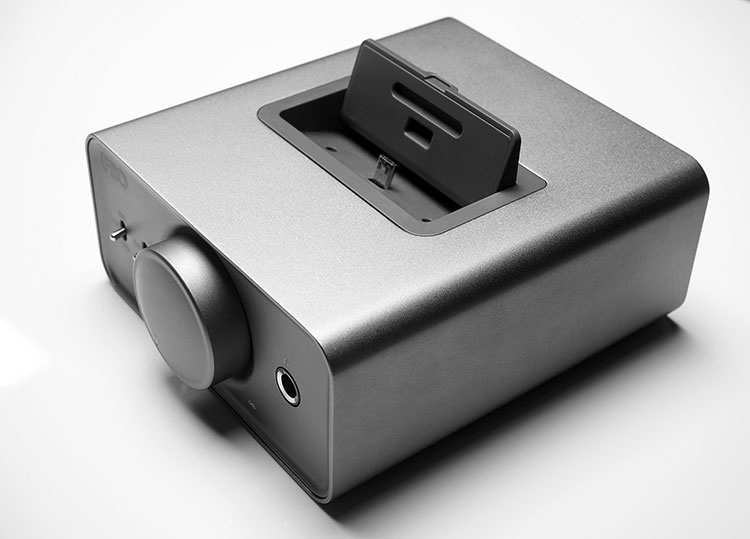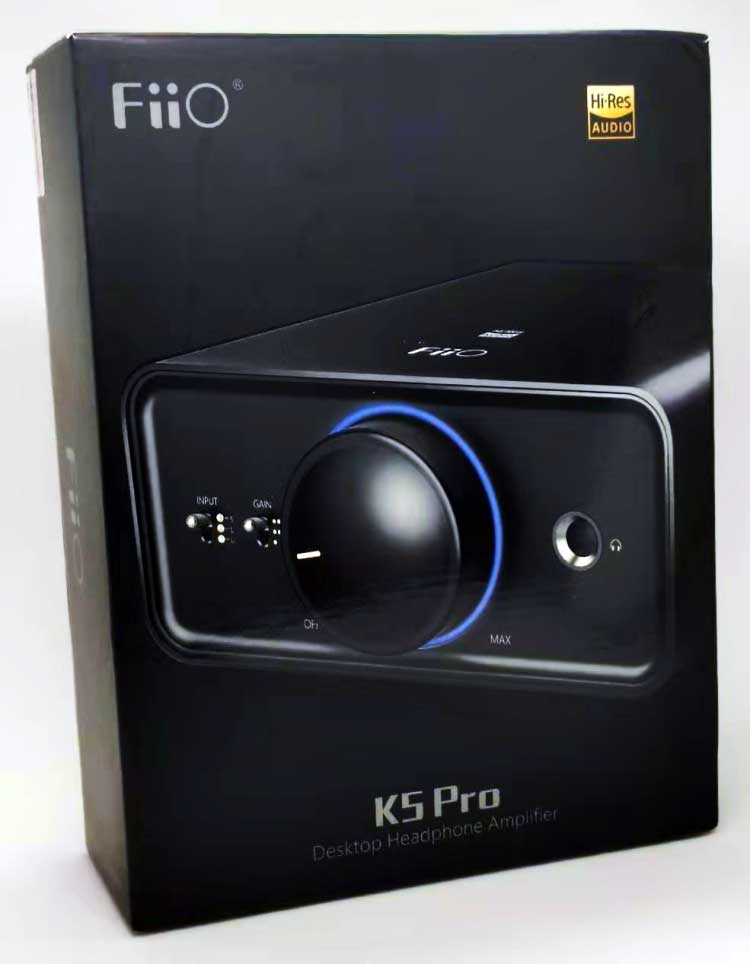The FiiO K5 Pro is the latest generation of a solid-state amplifier that started way back in 2012 with the E9 and directly replaces the K9 dock system from 2016. It is priced at $149.99
Disclaimer: The FiiO K5 Pro sent to us is a sample in exchange for our honest opinion. We thank FiiO for this opportunity.
To learn more about FiiO reviews on Headfonics you can click here.
Note, this review follows our new scoring guidelines for 2020 which you can read up on here.
The K5 Pro is the first integrated desktop DAC/amplifier built by FiiO and it is the latest addition to their K series. The K5 Pro is a fairly straightforward input/output system that does away with the original dock on the top panel and instead integrates a DAC into the amp design.
Like the original K5, the K5 Pro is built with power in mind and should be capable of giving your demanding in-ear monitors and some headphones a solid boost.
Building On A Legacy
If you are following FiiO closely you will remember the K5 non-pro docking station where you sat an X-series FiiO DAP to work as a standalone DAC. Despite looking nearly identical to the much older model, the new K5 Pro returns with a new DAC built-in that will take most any source with a digital or analog unbalanced output.
The new device supports not only digital inputs but also analog with its new integrated syle. The K5 Pro is designed in a solid aluminum housing, featuring ADC 0.5 dB incremental digital volume control, a multi-color back-lit metallic knob, and an amplifying stage built on the legacy of the E9 and the K5.
This is a powerful mini-desktop component for those on a budget at the price of $149.99.
In this review we are going through the new I/Os, checking the new standalone DAC function, and testing how well the K5 Pro handles big cans and IEMs!
What’s the pitch?
The K5 Pro is a very practical DAC Amp solution with a powerful AKM DAC and amplifier circuit. By canceling the dock on K5 and changing the I/O onboard, the K5 Pro becomes an individual DAC amp that connects not only to FiiO’s own devices but many other sources.
The DAC also supports up to 192kHz signals from SPDIF connections as well as receiving analog signals via RCA inputs. This means you could use it as a preamp.
The newly equipped ADC enhanced volume control doesn’t have imbalance issues at low volume. You can toggle between 3 steps of gain including a +0dB gain option for IEMs and have no trouble finding the sweet spot at a higher volume without introducing a high noise floor.
FiiO packs in all these functions at just $149.99 which may be an even better deal than the older K5 unless you need that dual 3.5mm balanced connection which I never find practical. Worth a note as well, even after adding the DAC function FiiO managed to push SNR further to ≥115dB. This is quite promising on paper for a powerful headphone amplifier at this price.
Circuit design
The K5 Pro runs on a 4-level audio circuit including a low-pass filter. Its volume adjustment is with NJRC volume control chipsets with voltage amplification and current drive amplification.
The K5 Pro runs on the same OPA1642+TPA6120 configuration as the K5 which received a lot of praise for its high power and neutral tuning. There is good attention to details on power filtering/ regulation to suppress crosstalk where the 15V power from the transformer is filtered internally.
Looking at the amplification part the ICs are old but have gained great popularity amongst DIY audio enthusiasts. The circuit’s good technical capabilities, easy implementation, and high slew rate allow the amp stage to handle sensitive IEMs and demanding cans at ease while keeping costs low.
I am expecting the K5 Pro to sound similar to the old K5 on RCA inputs, and it is exciting to test how much quality can be squeezed out from the AKM4493 DAC and amp.
Design
We have been covering a few FiiO products and you can see consistent packaging designs with a clean black theme. Cool and professional. There are EVA foams fitted on both sides of the device inside the packaging to add extra protection during shipment.
The K5 Pro has a clean design and a stealthy sandblasted finish on aluminum. The device comes with minimal accessories including rubber pads, a 3.5-6.3mm converter, and a USB cable. You will also find the power supply for that 15V power input, easily outputting much more swing for better dynamics compared to many portable devices.
You can consider getting a linear power supply that could further boost the output quality.
Overall, the design is very good and the materials are of excellent quality. This is a simpler industrial lool compared to the older K5 and without the dock, it has more space-saving properties.
Opening up the K5 Pro
Out of curiosity, I dismantled the unit to take a peep inside. The screws are all sitting on the rear end, unscrew everything and you will be able to slide out the board with the front panel. The board is heavily guarded by a huge plastic cover, a very industrial build, and all parts are very solidly installed. The topology is also surprisingly neat as well.
On the board, there are metal shields on the op-amp and you can see heat dissipation holes beneath the board to prevent overheating. There are a series of solid-state caps used for power regulation. It does not seem easy to remove the plastic cover so to make sure nothing is damaged this is as far as I will go in taking it apart.
Features
Front Panel
On the slightly hollowed, screw-less front panel you will see a centered volume pod, input toggle, and gain selection. There is also a 6.3mm output that fits common studio headphones and 3.5mm TRS IEMs with a convertor. There is no balanced circuit design so no XLR, 4.4mm, or 2.5mm TRRS, sadly.
The K5 Pro has 3 steps of gain control (+0dB, +6dB, +10dB) allowing some good flexibility when pairing with more efficient IEMs or handling power-hungry headphones.
The lowest gain level makes use of the hardware gain circuit so as not to compromise dynamic range and fidelity. That will be good news to users of sensitive IEMs or some small cans. You can toggle between signal inputs such as USB/coaxial(SPDIF), RCA line-in, in a very simple and efficient manner.
The backlit volume pot LED looks futuristic. This seems to be the new trend for some higher-end portable gears recently as well. The LED indicates the bit rate where normal red-book 44.1K WAV will get you blue lights, 48kHz up you will get yellow and DSD signal will result in Green.
Back Panel
The back panel houses all I/O jacks including Coaxial/Optical in, RCA line in/out, and USB in. The AC power jack is next to the USB socket and you could upgrade the power supply for better performance. You can use the optical and coaxial (SPDIF) to connect to your DAPs and there is a cover supplied for the optical jack.
ADC Volume control
Stepping up from the analog potentiometer FiiO installs the new ADC digital volume control which eliminates channel imbalance issues.
You may not notice the upgrade on the outside, but this is a great feature that allows much more precise low-volume control, letting you enjoy sensitive IEMs in a quiet environment also to use the K5 Pro as a volume controller/ Preamp for powerful power amps.
Channel balance issues have always been a nightmare for mid-night listens especially with multi-ba IEMs and sometimes it may get too loud before you find the sweet spot/ minimum vol. that works, if you have very sensitive ears this may be a great feature.
Preamp
When you use the RCA outputs they are actually bypassing the gain switches. Volume control still works and you can listen to the headphone output at the same time. I would recommend disconnecting your earphones to prevent any damage during this option because of the loss of gain functionality.
Sound Impressions
The below sound impressions are done with a Macbook USB output mainly, paired with the stock USB cable. The performance with other digital inputs may differ. The K5 Pro has a very friendly 1x gain factor so sensitive IEMs were also tested.
On the lowest gain there is zero to very faint background noise being heard and the higher gain factors can make IEMs sound very loud but more dynamic, especially for dynamic driver-based designs.
With headphones that demand more power, for example, the K701 from AKG, I can barely hear any background noise on the middle gain mode. The distortion level has excellent control and you can still hear good details and dynamics when boosting the volume to a high level.
The K5 Pro has impressive high output power. When you connect the M11 to the K5 Pro you will immediately hear a much stronger punch, better staging, and more solid kicks. The much higher power on this combo allows you to drive headphones with larger diameter drivers which makes it suitable for desktop home use.
Tonality
The K5 Pro has a similar clean but not harsh signature to the K5 due to the similar amplifying circuitry. There is a hint of warmth in the smooth and controlled lower frequencies, together with good punching power that goes deep and strong. The mid-treble is not altered for pseudo clarity and sounds very smooth.
The overall resolution and separation are decent for the price. There is enough treble extension to make it not sound compressed. Pairing the K5 Pro with multi-ba IEMs rich in bass/ treble texture will get you a good balance. With DSD files there are more density and details in the bass so go for better file quality if you have the option.
Synergy
The K5 Pro easily handles big or small cans and simply sounds better when compared to the K3, M11Pro, and the older X7 when driving anything demanding. On IEMs, it will still score better on staging and PRaT with its advantage in power. Like the K5, its key strength is in powering headphones with mid-high impedance.
IEMs
Like the older K5, the K5 Pro outputs impressively high power and features a fairly low 2Ω output impedance so that it works with basically anything below 300Ω. The design doesn’t compromise noise control and details while maintaining good dynamics, tonal balance, and extension for IEMs.
ikko OH1/Oriveti OH500
On low gain, it works pretty well with easy-to-drive earphones and buds including the ikko OH1 which sounds quite opened up. The Oriveti OH500 also sounds airy and punchy on the K5 Pro, very smooth with R&B and other relaxing music albeit more bass texture would be welcomed.
Final B1
I tested the Final B1 on the K5 Pro as well and its character is well-defined. The K5 Pro breathes a stronger sub-bass presence and some sparkle into the presentation. The two work great together for classical music. The strong output power makes its vocal presentation more solid and a bit more upfront.
A lot of my IEMs sound opened up and punchy on the K5 Pro but at the same time free from background noise. Although the tuning and control may not be as favorable as some dedicated portable amplifiers, the K5 Pro is still very capable and practical for everyday use.
Headphones
Sennheiser HD600
The HD600 sounds dull on many small amps but K5 Pro feeds the hungry beasts with solid output power, getting its mojo back while bringing some punchy bass and a peppy treble. Switching to high gain, there are good dynamics and openness. On mid-gain, you will get a good balance between tonality and dynamics, accompanied by a smoother sound.
When you pump up the volume, nothing cracks and it still sounds full in the mid-lows. There is plenty of power with just 50-60% volume needed to drive the HD600s. The treble is very well controlled and doesn’t sound artificial or aggressive so something like classical music will be enjoyable on this setup.
AKG K701 / Meze 99 Classics
Any headphones that have more bass in the tuning or bass texture will be a good match and benefit from K5 Pro’s power. If you are a fan of a cleaner and swifter sound the K5 Pro will not sound overly bright nor aggressive. You could pair the K5 Pro with a K701 for sweeter vocal performance or the Meze 99 Classic which sounds fast and energetic without any fatigue.
Sound Magic HP1000
The K5 Pro has more than sufficient power for planars, perhaps a bit too clean and fast and lacks emotion for my streaming content and playlists. One decent pairing I find is the recently released HP1000 from Soundmagic, a robustly built metallic headphone with a massive soundstage.
The combination has mind-blowing staging for a closed-back design. Surprisingly, there is very little compromise on the vocal which is forwarded with clear imaging. Together, the presentation is spacious, balanced in tonality, and with very little coloration.
This is a joyful listen for fast, light-paced music with a touch of sparkle in the treble. Lower gain on the K5 Pro enables the setup to offer more control with mid-higher gain settings boosting the dynamics for more fun.
The K5 Pro works like a champ with its power but my only wish is that there could be more resolution and refinement in the lower frequencies for lossy music formats.
To be realistic we are not reviewing anything $500 and the K5 Pro actually delivers very good dynamics and value as an all-in-one solution. It would also be fun if you have other stronger DACs to hook up to the K5 Pro to boost resolution and texture.
Select Comparisons
FiiO K5
The FiiO K5 Pro is doubtlessly a big upgrade compared to the older K5 on connectivity, also eliminating the channel imbalance issue. The balanced 3.5mm output is missing on the newer K5 Pro but I never find that a convenient option.
Meanwhile, the new coaxial and optical input will allow you to hook up your PS4, your M11Pro, and other DAPs not to forget your PC can system easily. I find the new K5 Pro slightly warmer than K5’s output and everything seems more clearly outlined than just being amplified.
FiiO K3
Looking at the specs you could easily spot a LOT more output power on the bigger K5 Pro. If you are looking for a DAC Amp to drive your big headphones the K5 Pro is technically much superior with a higher-end decoding chipset.
The K3 will handle your portable needs, getting you balanced out for your 2.5mm balance terminated IEMs and runs on the USB power input. It also supports plug-and-play and is more portable to carry around with your laptop.
Our Verdict
At just $149.99 the stealthy K5 Pro is capable of decoding up to DSD512, linking up your PC, gaming machine, and DAPs to active speakers and headphones for a better home entertainment experience.
So far this is the only device in FiiO’s range with such specs and features. There is plenty of detail in the design including a modernized ADC digital volume and 0+dB gain for sensitive earphones.
The features and tuning make the K5 Pro an ideal hub on the desk, with great power that will boost the dynamics on different headphones for movies and sound content.
The overall product experience is very satisfactory and I can easily recommend the K5 Pro if you are looking for a powerful entry-level DAC Amp.
FiiO K5 Pro Specifications
- Color Black
- Weight 436g
- Dimensions 120.5mm×130mm×55mm
- Volume Scroll Potentiometer+ADC Sampling
- USB input USB B, USB chip XMOS XUF208
- USB Driver ASIO/KS/DS/WASAPI/DSD DOP(Native)
- DAC AKM AK4493Driver
- OP-AMP TPA6120LPF
- OP-AMP TI OPA1642
- Gain 0/6/10dB
- Input port USB/Line in/SPDIF
- Headphone out 6.35mm
- Line out RCA
- Spdif in Up to 192kHz
- Recommended headphone impedance 16-300Ω
- Output Power (headphone output): 1.65W(16Ω); 1.5W(32Ω)
- Line Level 2Vrms
- Power Supply DC15V 1.5A
- THD+N≤0.004%
- Output Impedance <1.2 Ω
- Frequency response 20 Hz~80 kHz
- SNR>115 dB (A-weighted)
- Noise floor<8uV
- Crosstalk≥75 dB (1 kHz)
- MAX Output Voltage19.68 Vp-p
- MAX Output Current>500 mA
- <b>z35W7z4v9z8w</b>

